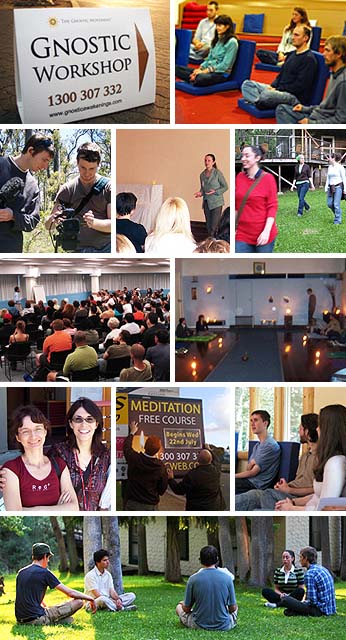
The Gnostic Movement, an international non-profit volunteer-run organization active from 1999 to 2012, provided a range of free services to support the study of modern Gnosis—a mystical spiritual practice based on the work of Colombian esotericist Samael Aun Weor. (Read an overview of it here.)
Its main service was running popular free courses on Gnosticism written by the author Belzebuub, who had studied Gnosis under Weor’s successor Rabolu. Belzebuub left the Gnostic Movement in order to focus on writing independently, and withdrew from public life in 2010.
The courses he wrote were among the first of their kind on the Web and reached a global audience of more than ninety thousand people—they could be taken online and at Gnostic Centers in Australia, North America, and Europe. On the back of the popularity of these courses, The Gnostic Movement became the most successful Gnostic organization in the Western world of its time.
The Gnostic Movement accommodated people from a variety of backgrounds, walks of life, and levels of interest. Of the tens of thousands who participated, most gave resoundingly positive feedback about their experience. However, as can be expected with an organization with far-reaching international exposure, it inevitably encountered people who disagreed with its teachings or approach. While most who attended with differing viewpoints tended to be decent considerate people who respected the rights of others to practice the spirituality of their choice, there was a small minority who disrupted the free services and even intolerantly undermined or attacked people for pursuing an approach to spirituality that differed from their own worldview. Some even actively undermined people in the organization who supported its free services.
People of this kind were usually asked to show common courtesy and consideration. While most would see reason and return to being civil, or simply move on peacefully to other things in their life, some intolerant individuals left with a grudge and a chip on their shoulder and became vindictive. Some who turned antagonistic were driven by underlying psychological issues which saw them swing from unbridled enthusiasm for something one day to denouncing the same thing vehemently in a short space of time. Others were just vindictive or bigoted. In a few extreme cases, certain individuals had to actually be asked to leave when their antagonistic behavior was intractable. There were a handful of former volunteers who left with a personal axe to grind after being called out for misconduct.

Whether disgruntled, disturbed, or fanatically opposed on ideological grounds, a destructive pattern played out a few times where malcontent leavers sought reprisals by posting anonymous vitriolic tirades online, often in web forums, against the organization whose free services they once willingly attended and could have freely and peacefully ceased attending at anytime if they disliked it so much. The underlying impulse driving theses overblown tirades was often the same: the disgruntled, badly-behaved, and/or intolerant leaver sought to validate themselves by denouncing and in many cases vilifying The Gnostic Movement, Belzebuub, and the other volunteers who made its complimentary services possible.
They often used classic character assassination methods in their attempts to discredit the Movement and its spiritual teacher, provoke phoney outrage, and thereby encourage others who had no exposure to The Gnostic Movement or Mark Pritchard (Belzebuub) whatsoever to pile on. In doing this, a number of falsehoods were circulated about Belzebuub, the nature of his free courses and teachings, and the nature of The Gnostic Movement itself and its personnel. Speculative innuendo, outright lies, half-truths, ludicrous exaggerations, and far-fetched scaremongering alarmist claims were spread to vilify them. Mark’s character and personal life was extensively and maliciously lied about and distorted beyond any semblance to reality. Almost all of this was done by people shielding themselves from scrutiny by hiding behind anonymity.
Dealing with dishonest, intolerant, and unreasonable people, and being maligned by malicious online diatribes is an unfortunate modern reality many organizations and figures have to deal with at some time or another. However, alternative spiritual groups and teachers can be especially affected due to broader ingrained social prejudices surrounding alternative spirituality. As a spiritual organization with an international footprint and large online presence, Belzebuub and The Gnostic Movement inevitably encountered cyber-hate, but the bigotry was often magnified due to it being a minority religious group.
The Gnostic Movement no longer exists, but scattered remnants of online vilification lurk in dark corners of the Internet which completely distort the organization’s true nature, record, and the positive philanthropic work it accomplished. This article puts such material into context and addresses some of the main claims to set the record straight.
Contents
The Rising Problem of Cyber Hate and Online Revenge
The Role of Anti-Cult Ideology
Spiritual Commitment Pathologized
Belzebuub’s Place in the Lineage of Modern Gnostic Teachers
The Gnostic Movement’s Successful Free Courses
Bogus Claims of Brainwashing “Unsuspecting” People
No, Astral Projection Is Not “Sleep Deprivation”
Structure and Democratic Processes
Attempts to Sully the Movement’s Clean Record
The Pattern of Victim-Playing Detractors
Equality and Personal Development
Relationships with Family and Society
The Relationship with One’s Partner
Attacks on Belzebuub’s Character
Belzebuub’s Assistance to Australian Retreat Project
Background
The Rising Problem of Cyber Hate and Online Revenge
Before addressing online invective directed specifically at The Gnostic Movement and Belzebuub, it is important to consider the wider social problem of cyber hate to put it all in perspective.

Cyberstalking, cyberbullying, and malicious anonymous trolling have become a common way for individuals to denigrate others in the internet era—whether out of rage, for revenge, for amusement, or to express intolerant bigoted views toward another segment of society without restraint. Former partners and employers can be targeted by jilted individuals seeking retribution; businesses can be unfairly tarnished and discredited by competitors posting bogus reviews, or lied about in fake stories posted by a disgruntled customer; habitual trolls opportunistically denigrate people for kicks; and bigots act out hateful agenda’s against minorities, targeting individuals or groups with vilification under the cover of anonymity.
Whatever the motive, perpetrators often face no consequences due to their anonymity. This perceived lack of accountability, coupled with the lack of face-to-face interaction with those they denigrate, can give rise to what psychologists call disinhibition effect: perpetrators lack empathy for their victims, are disconnected from the real-life human impacts their conduct has on others, and often completely dissociate their malignant online conduct from their “real life” persona (since they may never behave or speak that way in person). Some people’s darkest and meanest tendencies can surface online; trolls and cyber stalkers can be far more toxic and nasty in cyberspace than they would be face-to-face. The pathological lack of empathy caused by disinhibition effect can mean perpetrators post destructive exaggerations, outright lies, false and unfounded accusations, and malicious character attacks that cause real harm to the lives of their real-life targets—yet they may feel little to no remorse for it whatsoever.
Over the years, Belzebuub and The Gnostic Movement encountered cyber hate from people acting for a host of different reasons. Some attacked for revenge after being asked to leave for misconduct; others seemed to do it for amusement or due to compulsive behavior borne from mental issues, and others attacked because they had an ideological axe to grind. The latter category was usually comprised of intolerant fanatical people who lashed out at others for having spiritual viewpoints different from their own worldview.
The Role of Anti-Cult Ideology
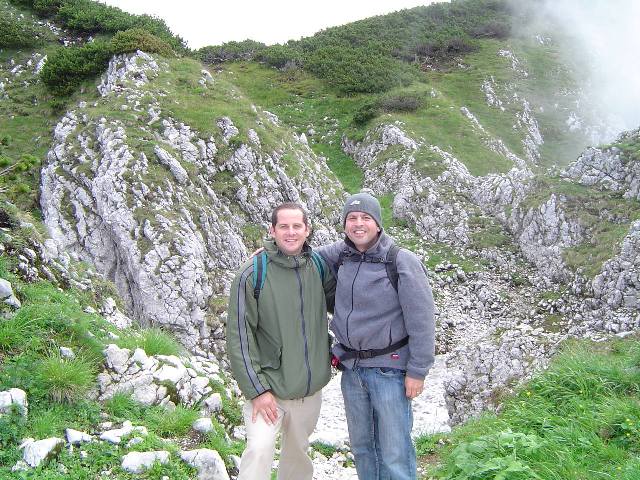
While any organization or individual can face cyber hate for different reasons, spiritual organizations and teachers must uniquely contend with intolerance shaped and bolstered by the pervasive ideology of the anti-cult movement. This ideology has constructed a dominant narrative which frames popular perceptions of marginal spiritual groups negatively—with paranoia and suspicion. It also provides any detractor, whatever their motive, an easy set of slogans, formulaic stereotypes, and rote talking points to project onto spiritual groups to mischaracterize them as “dangerous cults” people should fear and despise.
Not surprisingly, most online screeds about The Gnostic Movement took this well-worn approach, and detractors frequently lied, falsified events, and exaggerated beyond reason to puff up their flimsy claims and baseless alarmist scaremongering—a deception aided by the accountability-free discourse anonymity allows.
Before addressing the fallacious claims made specifically about The Gnostic Movement and its spiritual teacher Belzebuub, it is necessary to have a general understanding of the ideology of the anti-cult movement, because it forms the foundation upon which almost all claims have been constructed.
The Anti-Cult Movement
The anti-cult movement (ACM) is a loose affiliation of largely secular moral entrepreneurs and pressure groups which have worked to portray alternative spirituality as a social menace. It arose in the late seventies as a reactionary backlash to the rising popularity of alternative spirituality amidst the counterculture of the sixties and early seventies. Over the ensuing decades, anti-cult pressure groups and figures spread alarmist, unsubstantiated, and sweeping claims about minority spiritual groups, fueling rampant media scaremongering and moral panics.

The mass media has—largely uncritically—amplified, proliferated, and normalized anti-cult ideology by consistently framing its coverage from anti-cult perspectives. This paranoid approach has seen thousands of unrelated spiritual alternative groups fallaciously associated with the actions of a few highly publicized and criminal ones—all branded and generalized under the same doom-laden “cult” label, and speciously linked together as part of an imagined wider social problem—even though the groups being labelled encompass a huge diversity of different belies and actually have no connection to one another. The only real commonality they have is that they are not mainstream religious institutions.
This discourse has dramatically changed perceptions. Repeated negative media portrayals over many years has seen alternative spirituality shift from being an accepted peculiarity that was popular and viewed positively among the younger population in the sixties and early seventies, to being viewed through a lens of suspicion with a heavy social stigma attached.
Before the anti-cult movement, “cult” was not a word loaded with negative meaning—it was a neutral scholarly term to describe peripheral religious groups or practices (for example: “Greco Roman Mystery Cults”). Today it is unmistakably pejorative. Its connotations suggest a group is perhaps reckless, unhinged, and worthy of ridicule … or even sinister, dangerous, and evil—a potential threat to individuals or society.
Anti-Cult Pseudoscience

Anti-cult movement supporters have advocated sensationalist pseudoscientific theories to advance and legitimize paranoid, intolerant, and bigoted attitudes toward alternative spirituality.
One of the most prominent and pervasive was the notion or theory that “cults” conduct “mind control”; this was postulated by anti-cult figures to rationalize why people would commit to non-mainstream spiritual lifestyles they did not approve of. Anti-cult mind control theory subjectively framed spiritual commitment as some kind of induced pathological behavior rather than a personal choice.
At best, characterizing unconventional spiritual conversion or commitment as “mind control” is little more than an unfounded fringe theory—at worst it is sensationalist pseudoscience. It has been debunked, discredited, and roundly rejected for its lack of empirical basis and often hysterical unfounded assumptions (it has been described as pseudoscience by a forensic psychologist for example). The American Psychological Association officially dismissed mind control theory as lacking “scientific rigor” and U.S. courts formally rejected it as being outside accepted mainline science.
The theory has also been critiqued for its negative impacts on freedom of belief and association. It was disastrously used to justify forced “deprogramming” practices aimed at compelling people to recant their beliefs under coercion, often after being kidnapped and falsely imprisoned against their will. (Critics observed that the openly coercive nature of deprogramming practices was rather ironic given the hysterical claims proponents made about “cults” being coercive.)
However, while this far-fetched theory was eventually roundly rejected in scientific and legal circles, it still continues to be presented uncritically in mainstream media coverage and popular discourse, where glib references to “brainwashing” and “mind control” still frequently appear in reference to alternative spiritual groups. This has served to ingrain and normalize prejudiced and paranoid perspectives which actually lack credibility.
Spiritual Commitment Pathologized
The unfortunate result of anti-cult ideology it that the very idea of spiritual commitment, in any group outside a mainstream religious institution, has been more or less pathologized. A marginal spiritual group is likely to be viewed with suspicion irrespective of the group’s actual background, conduct, or teaching, simply for being an alternative spiritual group.
Needless to say, this extremely prejudicial view has serious implications for freedom of belief and association. Pathologizing spiritual lifestyle choices outside of “approved” mainstream institutions lays the groundwork for widespread intolerance or authoritarian intervention into people’s private spiritual beliefs and choices. While “deprogramming” is a more extreme example, on a more everyday level this prejudice can lead to discrimination and social ostracism.
Anti-cult ideology is essentially an attempt to enforce social orthodoxy, driven by apparently well-intentioned people out to “save” others from lifestyle choices they view as erroneous, menacing, or against the status quo. In that sense, the underlying motives behind it are not so different from the Inquisition, but its proponents cloak their reasoning in pseudoscience instead of religious jargon to appeal to the secular norms they purport to defend. However, they have in many cases actually undermined secular norms such as the freedom of belief and conscience, which is surely one of the pillars of secular democracy.
Anti-Cult Ideology Online
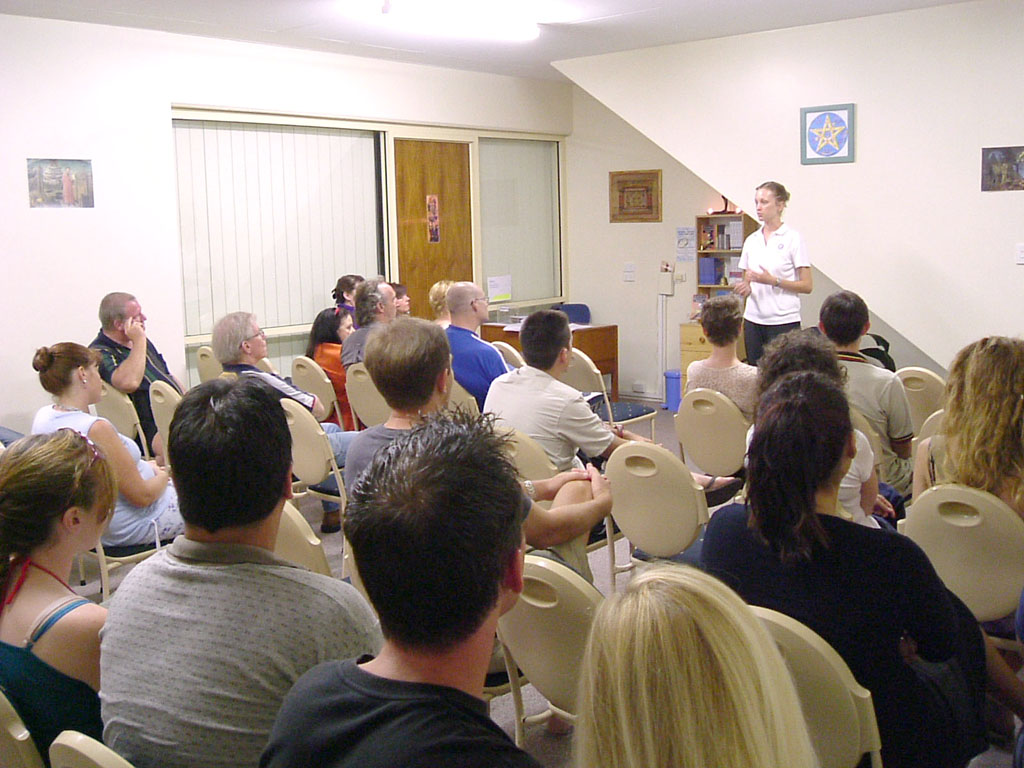
The Internet makes it easy enough to denigrate individuals or groups online, but the ideology of the anti-cult movement makes it even easier to attack alternative spiritual groups and figures—because it has laid the rhetorical groundwork for any potential detractor to make use of. Anonymous detractors need only couch their criticisms and accusations to fit well-worn “cult” typecasts to vilify their target, who is then liable to be viewed with distrust by default due to prevailing social prejudices. Meanwhile, the accuser can hide their own identity and motives from scrutiny. Some anti-cult websites facilitate this directly by hosting web forums where anonymous accusations about spiritual groups can be posted without restraint, yet attempts to challenge this are censored or even banned.
Once a spiritual group or teacher is cast under a pall of unsubstantiated suspicion by faceless trolls, an online “witch hunt” scenario can result. A bandwagon effect can be created where people who may know nothing about those being accused can feel self-righteous about piling on and joining the persecution out of a sense of vigilante justice. However, this situation is actually a complete inversion of justice—the accused is often deemed guilty until proven innocent by a virtual mob responding reflexively to manufactured outrage. Furthermore, the opportunity to meaningfully address and scrutinize the accuser’s motives and claims is usually thwarted by their anonymity.
In such an atmosphere, criticisms can spiral out of control and become increasingly overblown and absurd. Accusations can become hysterical, grievously speculative, and alarmist, as well as denigrating, as the targets are dehumanized and reduced to some sort of bogeyman caricature by cyber-mobs of scaremongering bigots.
Not surprisingly, The Gnostic Movement and Belzebuub were accused of all manner of preposterous things by anonymous trolls over the years. Detractors did not let the truth get in the way of sensationalism—turning the most trivial of incidents into atrocity stories or captivity narratives—a self-serving pattern widely apparent in apostate testimonies which has led many scholars to question their reliability. Detractors exaggerated, speculated, made things up entirely, and completely twisted reality to associate a benevolent organization and spiritual teacher with some of the most alarmist and formulaic negative “cult” stereotypes.
The section below addresses some of the common claims trotted out by anonymous trolls to smear The Gnostic Movement and Belzebuub, and the facts refuting them.
Disinformation Debunked
Belzebuub’s Place in the Lineage of Modern Gnostic Teachers

The Gnostic Movement’s theology was based on the work of Samael Aun Weor. It traces its heritage to the Universal Christian Gnostic Movement (UCGM), an organization Weor founded in Colombia in 1960, which had a large international presence, particularly in Latin America.
Mark Pritchard (Belzebuub) joined the Universal Christian Gnostic Movement (UCGM) in the UK in 1990; it had hundreds of thousands of members around the world at that time. It was coordinated by Weor’s successor Rabolu, who had been a close student and disciple of Weor and was entrusted with guiding the UCGM before he passed away.
Rabolu had faced heavy opposition when he took on that role. Many people refused to accept him, publicly denounced him, and openly tried to thwart him, despite Weor openly calling on everyone to accept his spiritual authority. Rabolu faced a legal battle to gain control of the organization from a rogue member. Before he passed away in 1977, Weor had told Rabolu he must take back control of the UCGM so it was in the right hands. It took Rabolu many years in court to do so, but he eventually prevailed.
There was a schism among Gnostics when Rabolu coordinated the UCGM, with those who refused to recognize him splintering off in other organizations, some of which had initially been founded by Samael Aun Weor for other purposes. Under Rabolu, Gnostic instruction was simplified to focus on its core practical aspects.
As a UCGM instructor in the UK, Mark was very active, establishing eight study centers, giving classes in a further five, and being elected to the position of President of the national board. In 1994 he moved to Australia and founded a center in Sydney.

In 1998, Mark announced to the UCGM worldwide that he had reached the stage on the spiritual path where he had uncovered his inner spiritual name, Belzebuub. It was a stage both Samael Aun Weor and Rabolu had reached previously.
However, almost all the members of the UCGM worldwide, except for those in Australia, repudiated his claim. Many wrote to Rabolu to request Mark be expelled, but Rabolu did not respond to their requests. He also refused to respond to queries about whether Mark’s claim was true. Unable to expel him without Rabolu’s approval, the boards of each country instead dissociated themselves from Mark. The Greek organization spread a false rumor that Mark had been expelled from the UCGM at a meeting in 1997, but expulsion was not discussed at that meeting, as it was held to arrange for instructors from Spain to come to the center in Australia, which later occurred. This expulsion claim has been repeated and recirculated online by detractors to suggest Mark was a rogue teacher at odds with Rabolu, but this is completely false.
After the members of the UCGM took these hostile actions toward Mark, Rabolu directed them to form a closed religious order and banned them from using his books and teaching the public. Belzebuub has stated that Rabolu’s stance of keeping silent concerning him, and his actions to neutralize the old UCGM, served to free him to teach Gnosis afresh without being encumbered by hostile fanatical people from the old organization who would undermine him. Rabolu’s silence meant only people with enough spiritual understanding would accept him and join the reformed Gnostic Movement Mark Pritchard would coordinate. As it turned out, only the members of the UCGM in Australia accepted him when the new organization was launched.
In 1999, Mark Pritchard and other members of the UCGM in Australia formed a new organization called The Gnostic Movement, which was amalgamated with the UCGM Australian organization.
The Gnostic Movement’s Successful Free Courses
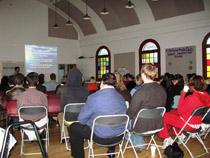
The Gnostic Movement’s courses came about because Belzebuub wanted to present modern Gnosis in a way that was easier to understand. So he wrote eight or nine week programs presenting Gnostic exercises and concepts in a practical way which guided people in how to gain personal metaphysical experiences and inner guidance through spiritual practice. He divided the study of Gnosis into three streams—astral travel and dreams, self-knowledge, and esotericism—each with its own course, so people could focus on and grasp each component more effectively.
After taking the main three courses, people could opt to take advanced courses in The Gnostic Movement and train to be teachers if they wished to. The advanced investigation course focused on honing the practices already covered in the three main courses; attendees were given a weekly assignment to explore an exercise, and shared feedback on their progress at the next course session. This was the first course to have minimum attendance requirements; students had to actively participate and attend throughout the course round to pass it.
Those who completed the advanced investigation course then had the option to enter the teachers training course if they wanted to. Those who did not pass it, or who passed but did not wish to enter the teacher’s course, could repeat the advanced investigation course (or any other earlier course) as they wished. Most regular attendees opted not to take the advanced courses, and instead chose to repeat the main courses multiple times and attend other free workshops and events.
The free spiritual courses Mark Pritchard (Belzebuub) wrote for The Gnostic Movement were among the most popular of their kind when launched; they were originally written as Internet courses, but due to the positive feedback from students and teachers, were soon running in The Gnostic Movement’s centers too. Over about a decade, they were taken by more than ninety thousand people around the world.
Although most who took the courses expressed great appreciation for the free service, the sheer number of attendees meant the Movement inevitably encountered some people who disagreed with what it taught. While it’s only to be expected that amongst tens of thousands of participants not all would appreciate the courses, there were some who could not disagree peacefully and live and let live and went off the scale with their antipathy. A tiny vocal minority of detractors on the paranoid fringes of the Internet posted melodramatic tirades about the course filled with all kinds of ridiculous claims which are addressed below.
Bogus Claims of Plagiarism

Because the courses Belzebuub authored were written to introduce people to the Gnostic teachings of Samael Aun Weor (the founder of modern Gnosis), they naturally explained many concepts and exercises Weor had introduced, using similar terminology. Bizarrely, some people accused Belzebuub of plagiarism due to the similarity between his work and Weor’s, yet the whole point of the courses was to present the teachings of modern Gnosis which Weor had introduced, in a structured accessible manner that a Western audience could more readily understand. In his course material, Belzebuub referred to Weor multiple times, and clearly acknowledged that Weor was his predecessor and the originator of the modern teachings of Gnosis. In his course on esoteric wisdom, for example, Belzebuub stated Weor had been given the role of “explaining the esoteric path to the world, in a suitable form for this day and age” and he was “personally grateful… for the teaching he gave.” He outlined that he was a student of Weor’s Colombian student and successor Rabolu and stated it was unlikely he could have found and walked the spiritual path himself without the help he received from both of them.
What makes these accusations even more absurd and unjust is that Belzebuub’s work has consistently been a target for actual plagiarism—literally thousands of people have taken and drawn upon his work without acknowledging him whatsoever. People lifted content from the freely disseminated PDF documents containing his written course material, and the PDF files themselves were pirated and recirculated on other websites. Copyright infringement was so prevalent that by around 2005 it was decided to stop issuing Belzebuub’s written course material as PDFs; they were instead compiled into books to afford them more protection.
If that was not bad enough, some of those who plagiarized or imitated Belzebuub’s work in The Gnostic Movement were Gnostics from other organizations that on one hand refused to accept him and even publicly denounced him, yet on the other hand readily “borrowed” from or imitated his work without acknowledging him when it suited them.
Bogus Claims of Brainwashing “Unsuspecting” People
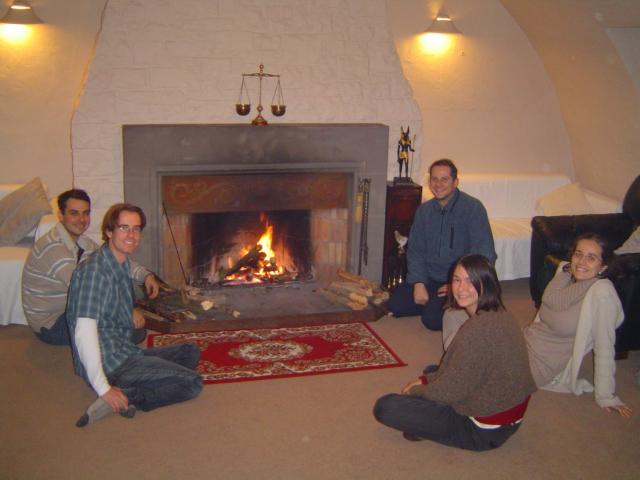
One of the more fantastical conspiratorial claims surfacing on message boards conjectured that the courses were some kind of devious mind control scheme to attract and surreptitiously condition “unsuspecting” people.
The basis for this dramatic claim rested on the rather ordinary fact that the courses progressed from more basic subjects to advanced ones as you moved through them. Additionally, detractors wrongly alleged the organization did not disclose its philosophy openly to the public but only revealed it gradually through the courses in order to slowly “condition” and indoctrinate “unsuspecting” people into accepting its worldview. On the more paranoid spectrum of claims, it was also suggested taking the courses would somehow methodically “eradicate” personal autonomy and individual thoughts (it was never explained quite how).
When scrutinized, these claims are patently absurd. Firstly, it is simply not true that the organization concealed its philosophy. The recommended books of Samael Aun Weor were freely available for download from The Gnostic Movement’s website, and these described Gnostic theology and its esoteric practices comprehensively—such as alchemy, the wheel of life, karma, the esoteric path, and other advanced esoteric aspects covered in the courses. Belzebuub wrote the courses to introduce and explain modern Gnosis in a more structured and accessible way. This made it easier for an unacquainted person to understand it and put into practice, but anyone could familiarize themselves with Gnostic theology any time, without needing to take a course.
Secondly, courses of study on just about any topic are structured like The Gnostic Movement’s courses were. When teaching anything—whether mathematics, swimming, or a second language—a beginner is first shown the basics and gradually progresses to more advanced things as they build up their aptitude, knowledge, and experience. The Gnostic Movement’s courses took the same common, logical approach—beginning with foundational topics and exercises and progressing to more complex and advanced ones. In non-paranoid circles, this is recognized as simply being a basic principle of education, not “mind control.”
No, Astral Projection Is Not “Sleep Deprivation”

By far the most far-fetched and paranoid claim in the “mind control” vein was the assertion The Gnostic Movement used “sleep deprivation” to take away people’s will and “break down their minds.” These extraordinary claims were trotted out in blasé one-liner accusations, without even a token effort made to substantiate them.
The entire “basis” for the claim The Gnostic Movement “broke down” people’s minds with “sleep deprivation” was that it taught astral projection exercises in its courses. These are essentially meditation techniques that involved relaxing and focusing the mind while falling asleep, so that one enters into the realm of dreams (referred to as the astral plane) with self-awareness. This, it was taught, was said to allow one to actively explore there consciously (an experience known as astral travel or lucid dreaming).
Because astral projection exercises are done at night while falling asleep, a few accusers quite cynically made the outlandish claim that astral projection equals sleep deprivation, and is actually a mind control method.
Putting aside the fact that astral projection is a widely-used spiritual practice that has been around for a long time, and is practiced by a number of organizations with different philosophies, not just Gnostics, what is truly bizarre about this claim is that The Gnostic Movement actually taught people it was virtually impossible to astral project without falling asleep. The techniques did not involve avoiding sleep, but harnessing it—people were simply shown how to fall asleep with a relaxed body and focused mind. These exercises could be done at the usual time someone went to bed, lying down in bed as they went to sleep. Some people who struggled with insomnia even reported that these meditative techniques actually helped them fall asleep better.
In providing guidance on how to approach these practices, people were advised not to force the body or mind. In the astral travel and dreams course, it was explained that people could occasionally set their alarm to go off early so they could make another attempt at astral projection if they wanted to before getting up, and thereby increase their chances of achieving astral projection in a night. However, in the written course material Belzebuub clearly advised: “It’s not a good idea to do this every night for long periods of time however as in the long run the disturbed sleep will affect you adversely.” He explained that if an alarm was set to go off in the night, it should be done in a way that causes the least strain:
So a way to do it with the least strain is to allow an extra hour of sleep when you go to bed and to set your alarm clock to wake up after your normal sleeping hours minus two or three hours, so for example if you normally sleep eight hours, set your alarm so that you wake up after five or six hours of sleep, then try the Astral again making sure you get the remaining two or three hours of sleep.
In Gnostic centers, advanced students would sometimes gather on a Saturday night at the center with their sleeping bags, and lie down on cushions to attempt to astral project together in a room, with the alarm set to go off a few times in the night so they could make multiple attempts. However, everyone usually went to bed early when they did this, as the idea was to maximize the opportunity to explore the astral which sleep provided—not to avoid sleep. This is hardly “sleep deprivation.” There are many regular activities people do on a Saturday night that result in far more sleep loss than waking up and going back to sleep a few times in the night after an early bedtime.
The ridiculous accusations that The Gnostic Movement used “sleep deprivation” to control people’s mind was just a lazy attempt (among many) to sully the Movement by linking it to wider sensationalist cult stereotypes based on the flimsiest of reasoning. They were a weak attempt to frame The Gnostic Movement as a “cult” by using the most common—and discredited—line of attack stemming from anti-cult movement ideology—claiming alternative spiritual groups conduct “mind control.” For example, one accuser made the hysterical claim The Movement’s meditation exercises were akin to “sleep deprivation” techniques “often used by cults” to break down people’s minds and will. However, it’s worth knowing that not only are these “mind control” claims about The Gnostic Movement specious and absurd, the theoretical framework they are based on is actually invalid, having been rejected by the American Psychological Association and U.S. courts as being outside mainline science (read the previous anti-cult pseudoscience section for more on this).
Administration and Personnel
The Gnostic Movement was a non-profit organization run by volunteers and funded by donations. All of its courses were free of charge and no one made profit from any of its services.
Structure and Democratic Processes

Volunteers comprised members, teachers, and trainee teachers. People could become official volunteers of the organization by joining the teachers training course and becoming a trainee teacher. When trainee teachers gained enough experience they were made a qualified teacher, who could run classes and centers. Teachers who demonstrated ongoing commitment were invited to become members of The Gnostic Movement, who had voting rights in the organization in their country.
The members administered the organization, and elected from among themselves directors who took positions on the national board in each country. The members elected Mark Pritchard (Belzebuub) to coordinate the Movement internationally; he was an administrative link between each country and oversaw global initiatives and wrote the courses provided in each region.
Being a non-profit organization that provided its courses free of charge, The Gnostic Movement was reliant upon the financial support it received in donations to function. Ongoing expenses included center rent, insurance, advertising costs, and web hosting fees. General donations were used to cover expenses, and any funds spare after costs were met were put toward new initiatives such as video productions. Donations were always used for the purposes they were given. If donations were given for a specific cause, such as in a fundraiser to purchase a retreat, they were used or held aside for that purpose; in some cases where they were raised for a specific project and the organization was unable to use them for the purposes given, they were returned.
Attempts to Sully the Movement’s Clean Record
The Gnostic Movement maintained an impeccable record in all countries it was present, complying with all government requirements. Accountants, lawyers, and other professionals hired by the organization commented on how well in order its affairs were.

However, anonymous trolls flung a few wild, vague unsubstantiated claims around about the organization supposedly committing “illegal actions” and even “fraud.” Once again, they made no attempts to substantiate this, and provided no specifics on what illegality allegedly occurred, let alone proof, since the claim was baseless. There was also some empty talk about court action to be taken against The Gnostic Movement for these unspecified “illegal actions.” All of these claims were empty and fictitious. There was never any court action taken against The Gnostic Movement, just like there was never any “fraud” or “illegal actions.” In fact, not a single legal action was ever taken against The Gnostic Movement in any country throughout its entire existence.
The false allegations of fraud were invented by a few disgruntled ex-directors who were asked to vacate their positions in the Greek organization for misconduct. After stepping down, they later made up spurious claims of “fraud” as an excuse to illegitimately re-take control of the board from its democratically elected directors.
The takeover was done underhandedly: the rogue ex-directors held a private meeting without notifying or inviting all registered members in the country, even though that was required by the organization’s constitution. At their exclusive meeting they unilaterally voted to alter the constitution to strip voting rights from everyone else and invest all power over the organization into their own hands.
Ironically, after this underhanded power play, they then accused the organization of acting illegally when their own actions breached the organization’s governing constitution. They attempted to justify their actions by spinning a tall story about how they were “forced” to take control of the board to address the unstipulated “fraud” they claimed other members committed, supposedly with Mark’s knowledge.
The basis for their extraordinary claim was absurd. The supposed “fraud” was little more than a trivial clerical discrepancy involving a wrongly-dated cover sheet mistakenly being attached to organizational documents submitted to the Government in Greece (the cover sheet was readied for submission a few months after the document itself was completed, which is why the dates varied by a few months. The delay occurred due to a delay waiting for one of the ex-directors to confirm his resignation.). The date on the cover sheet was not “fraud,” but rather, the discrepancy in the dates between the cover sheet and document was openly acknowledged, and the Government said it did not matter. Furthermore, Mark Pritchard had no knowledge or involvement in any of this.
Little wonder then the detractors refrained from providing any details when making their online allegations of “fraud.” In reality, a trivial and irrelevant date discrepancy was just used as a pretext by retaliatory ex-directors to spread false claims illegitimately as part of their manoeuvres to retake control of the Greek organization they were stood down from. After the takeover, they used the co-opted Greek organization to run a three-year smear campaign against Belzebuub and The Gnostic Movement they had formally been affiliated with.
The Pattern of Victim-Playing Detractors
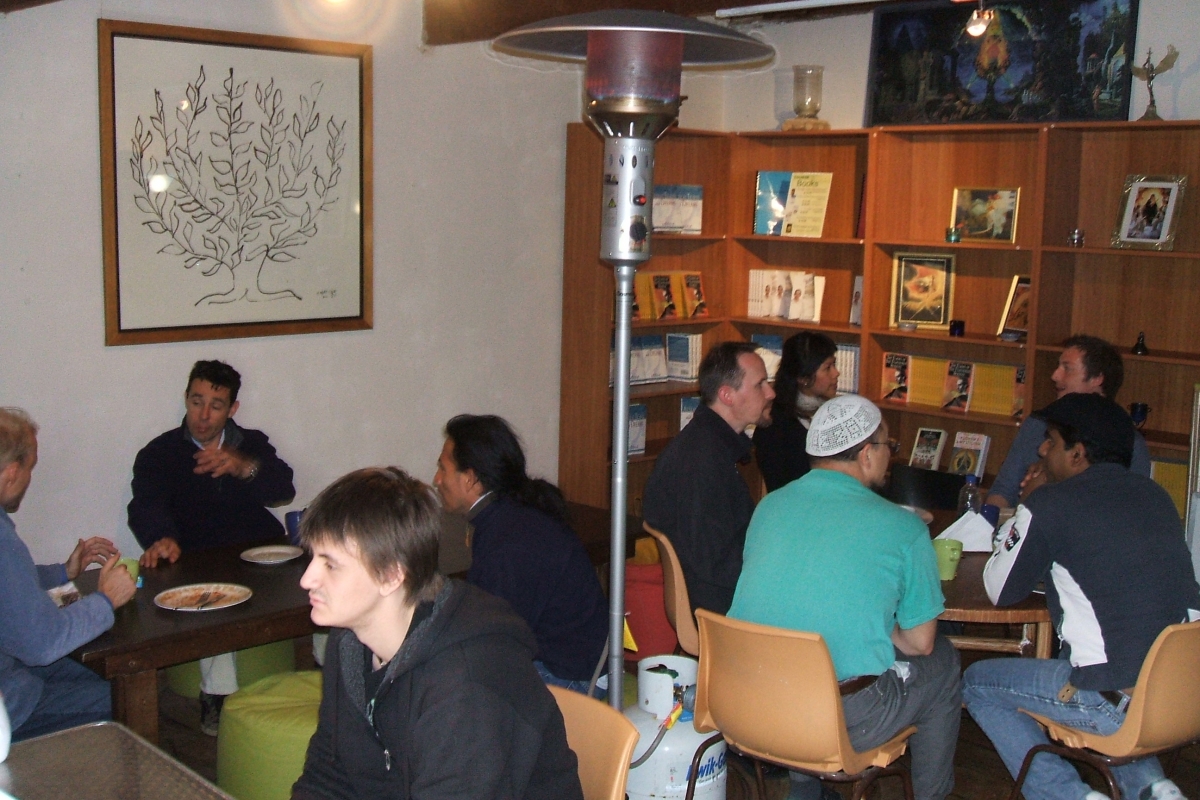
Paradoxically, the rogue directors mentioned above and their friends went on to accuse The Gnostic Movement of authoritarian behavior—after they unilaterally annulled the voting rights of other Greek members and concentrated all power over the Greek organization into their own hands. Incidentally, before their illegitimate takeover, some of them were originally asked to stand down due to their power-seeking, belligerent, and overbearing behavior (traits subsequently on display in their takeover scheme).
However, they were not the first disgruntled individuals with an axe to grind to disingenuously accuse The Gnostic Movement of being authoritarian while behaving belligerently.
The Gnostic Movement always tried to maintain a harmonious and peaceful environment for the benefit of all participants, and behavior that was antagonistic, obnoxious, and which undermined or disparaged other people or disrupted the services was not tolerated. Those who acted in this way were asked to respect the rules and show basic respect to others. Most did, but there was a small minority of people who could not handle their bad behavior being called out and instead became incensed and vexatious; in some cases to the point they had to actually be asked to leave. Such people sometimes went on to become resentful anonymous trolls who posted all manner of invective about The Gnostic Movement and the supposed injustice they suffered in the organization.
In these instances, accusing The Gnostic Movement of being authoritarian seemed to be a common tactic disgruntled antagonists employed as a victim-playing strategy, whereby the aggressor fabricates victimhood to justify attacking others. This was often done to play into “cult” stereotypes—attempting to characterize The Gnostic Movement as a strict and controlling organization that tried to “silence” them for merely “questioning” or “challenging” its authority. In reality, people like this had undermined or attacked people in the organization, felt slighted when their inappropriate behavior was called out, and then just continued undermining and attacking the organization and its people in online outbursts and tirades.
The Gnostic Movement also faced intolerant rants from former attendees who simply found they disagreed with its teachings. Sometimes these were religious fundamentalists of various kinds, opposed to people with views different from their own. While hard-line Christians who viewed Gnostics as “heretics” were one source of antagonism, most opposition of this kind actually came from other modern Gnostics who purported to follow the teachings of Samael Aun Weor, but rejected Belzebuub. Although neither Belzebuub nor any members of The Gnostic Movement ever attacked or interfered with other Gnostic organizations, some people affiliated with other Gnostic organizations vehemently denounced The Gnostic Movement online or undermined it by disrupting its web forums with proselytization or trolling. The organization’s message boards had to be closely moderated to deal with the frequent antagonistic or underhanded intrusions by such people.
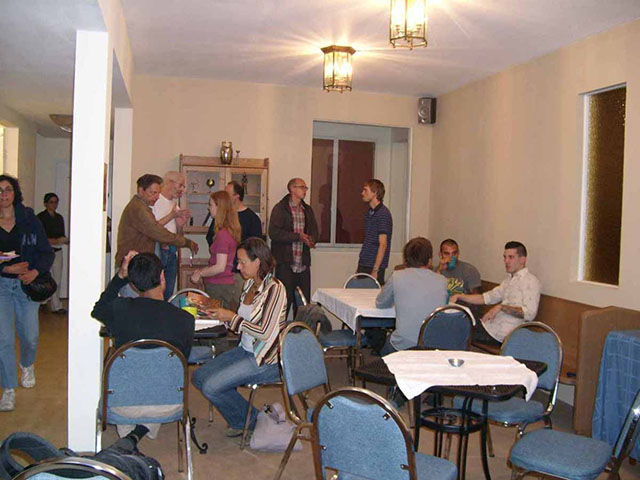
In other cases, some former participants simply had a change of heart and no longer wished to practice Gnosis. But instead of moving on peacefully with their lives and respecting people’s differences as most did, an intolerant few disparaged the organization whose free services they once attended enthusiastically of their own volition—and were free to stop attending whenever they wished—all because they decided they did not like it anymore. They tried to make out that they were somehow victims to validate their denigration of others, but the only “wrong” that had happened is they attended something and decided it was not for them. In one case, a person with acknowledged psychological issues who had attended just two introductory courses and who never met Belzebuub, posted 196 comments in a forum thread in one year alone, intolerantly and irrationally attacking Belzebuub and the Movement, making outlandishly defamatory and hysterical claims, and openly asking what else he could do to get practitioners of Belzebuub’s teachings out of his city “other than ripping down their posters whenever I can.”
It was also the case people with more undefined “new age” perspectives attacked the organization for failing to align to their own worldviews. Paradoxically, people like this often accused the organization of not being “open-minded” enough for their liking, and yet appeared personally affronted that an organization could exist that approached spirituality in ways differing from their own. On encountering such criticisms, one gets the impression the person had hoped The Gnostic Movement offered an “anything goes” approach that could be all things to all people. But The Gnostic Movement taught a particular thing—modern Gnosticism—and made no attempt to hide that fact, in much the same manner a Buddhist organization does not hide the fact it teaches Buddhism. Those who attacked The Gnostic Movement for failing to be “open-minded” failed to appreciate the irony that, by attacking people for pursuing a form of spirituality they disagreed with, they exhibited the very trait they accused the Movement of.
Respect for Freedom of Belief
In an open and tolerant pluralistic society with freedom of belief, one inevitably encounters people or groups with beliefs different from one’s own, or who approach similar beliefs in different ways (as demonstrated by the sheer number of religious denominations). To attack people for having different beliefs is generally considered close-minded and bigoted—a form of religious intolerance. Thankfully however, the cases mentioned above were the exception from the rule. Most people who attended The Gnostic Movement were decent people who showed courtesy and consideration for others and respected other people’s differences and rights. Most participants, even if they found they disagreed with aspects of Gnostic theology, respected the rights of those in the organization to teach and practice the spirituality of their choice, even if they did not want it for themselves. Some even chose to continue attending events even though they did not accept the overall Gnostic doctrine, because they enjoyed the positive, friendly, and uplifting atmosphere.
The members and teachers of The Gnostic Movement understood that not everyone was going to agree with the teachings, and anyone could attend and participate as long as they were respectful and non-disruptive. The right to spiritual freedom was respected in the organization, and no one was prevented from going if they decided to leave to pursue something else instead. No members of The Gnostic Movement or Belzebuub ever attacked or interfered with other spiritual organizations or groups, because they respected people’s free will and the freedom of belief.
Upstanding Volunteers

The Gnostic Movement ran for the benefit of everyone who wished to study Gnosis; it existed because a group of dedicated people wanted it to exist, valued the spiritual opportunities it offered, and so committed their time to running and supporting its free services. Volunteers did outstanding work in the organization over the years, administering the centers, running the courses, creating and administering websites, and producing videos, posters, and other materials.
The level of participation among volunteers varied widely. While various people helped out with ongoing tasks such as cleaning and tidying the centers, distributing posters and flyers for an upcoming course, or donating food to center cafes, the opportunity to become more involved with running the organization and contributing to various projects was there for those who wanted it.
A person became an official registered volunteer on entering the teachers training course; trainee teachers could guide courses under the supervision of a teacher, and became qualified teachers when they gained enough experience. Teachers had the responsibility to provide the courses, whether online or in centers. Teachers who showed a consistent level of commitment and responsibility were invited to become members, who as well as teaching, also administered the organization and oversaw new initiatives and projects, such as creating or improving the websites, producing videos, organizing international retreat gatherings, and creating marketing material.
Volunteers at all levels could be involved in various projects according to their interests and abilities. The level of involvement varied greatly among volunteers and was up to the person—no roles were compulsory and apart from scheduled meetings and one hour course sessions, there were no set hours, so it was up to each individual how they chose to participate, and to what extent. People could step down from a position or from volunteering entirely at any time for any reason.
Code of Conduct
Like many well-run organizations, The Gnostic Movement had a code of conduct its personnel were expected to follow to ensure things functioned properly. In religious organizations, these codes understandably encompass the religion’s spiritual principles—it is usually expected that those who instruct others in a particular religious field, or are in training for it, will commit to upholding the principles they teach others. Religious teachers of all kinds are generally expected to exemplify the standards of their religion through their own conduct.
The Gnostic Movement was no different in this respect, and had a code of conduct for people who taught Gnosis or were training for it. This code of conduct originated in the Universal Christian Gnostic Movement (UCGM), the organization founded by Samael Aun Weor, in which Belzebuub studied under Weor’s successor Rabolu. The same principles were carried over to The Gnostic Movement’s code of conduct when it formed in Australia in 1999. The code of conduct was explained upfront to people who were interested in joining the teachers training course, so they could decide whether or not they wished to commit to upholding it. Those who did not wish to abide by the code were under no obligation to proceed, and could choose not to do the teachers training course.
Equality and Personal Development

Teachers and members came from diverse backgrounds, and included both men and women. Belzebuub emphasized the equality of the sexes in his teachings, and this principle was exemplified in the Movement’s administration, with female members holding senior positions on boards (women served as treasurers in both Australia and the USA for example) and taking up various management roles. The directors of a separate publishing company that printed Mark’s books were also women who were members of The Gnostic Movement.
Many of the volunteers were skilled professionals with successful careers in a variety of different fields, and the breadth of their skills was one of the reasons the Movement was able to produce websites, videos, graphical design material, and other work to a high standard. The Movement also provided an opportunity for people to upskill and gain valuable work experience from volunteering; the skills and work experience people acquired directly boosted some people’s careers.
Volunteering in The Gnostic Movement could be an enriching experience; people made friends, learned new skills and worked together in a supportive and friendly environment. Volunteers tended to be caring and friendly people, committed to making a positive impact in the world, so it is not surprising that the vast majority reported having a positive experience. Many former volunteers who chose to move on to other things in their life continued to maintain close friendships with their former colleagues after leaving. They were decent considerate people who treated their colleagues respectfully, both while they were in the organization and after leaving. Only a tiny handful of disgruntled individuals bucked that trend and resorted to the hurtful behavior of denigrating their former colleagues after leaving.
Relationships with Family and Society
The Gnostic Movement encouraged people to engage constructively with the world around them and use their daily interactions with people to acquire self-knowledge and change inwardly. In the Searching Within course, Belzebuub laid out that isolating oneself from society was spiritually detrimental, as it would mean missing out on the necessary opportunities to learn about oneself through interacting with others:
“The everyday interaction with people provides a wonderful opportunity for self-discovery… It is therefore useless to become a hermit or to live a solitary life away from society, even to live permanently in a retreat, because if we do we will lose all those opportunities to self-discover…”
~ Belzebuub, Searching Within Course

Belzebuub encouraged people to use the circumstances of everyday life—at home, with the family, or at work—to learn about themselves. He explained how to observe with detachment the negative states that can spontaneously arise within when interacting with others, and how by seeing, detaching, and eventually removing them, one could change within and live with more intelligence and love.
Belzebuub explained that a having a job is useful not just for earning a living, but also provides “an excellent opportunity for [inner] learning.” He also described that by doing an inner work while doing one’s job a person could also “do the job better.”
Belzebuub also described family life as another arena for inner growth in which “love is to be encouraged and developed.” Belzebuub encouraged people to watch for and remove any “resentments” when interacting with family members, and thereby cultivate more love, writing that “one cannot become a spiritual being if this [resentment towards family members] exists within.” While he stated that a person doing the spiritual work should make it their main priority, and should not avoid it out of fear of disapproval from family members, he also made clear spirituality should not be used as an excuse to neglect family members and leave them in physical need. He advised people to “give time that is due to the family, to the family, and time that is due for [spiritual] study, to study.”
This theme was also emphasized by Samael Aun Weor as being necessary for a spiritual life in one of the books recommended and provided for download by The Gnostic Movement. He outlined the need to fulfil one’s duties at home with one’s own family, and be a “good householder”:
“When one is not a good householder, it is clear that one is not prepared to enter the [spiritual] path… A subject who does not fulfill the duties of his home cannot achieve the great change. A person who is a bad father, bad wife or bad husband or who abandons his home for this or that man or woman, will never be able to arrive at radical transformation.
The cornerstone of Revolutionary Psychology is in the requirement of: Having a perfect equilibrium at home; whether being a good husband, good father, good brother and good son. Perfect fulfillment of the duties which exist towards suffering humanity; becoming a decent person.
Whoever does not fulfill these requirements will never be able to advance in these revolutionary studies.”
However, a few anonymous trolls repeated a ridiculous refrain about The Gnostic Movement supposedly being bent on “destroying families” and, as usual, made no attempt to substantiate their extraordinary claim. The reality was very different—most people described that their relationships with family members improved, as they learned to apply the teachings to overcome inner resentments and cultivate more care for those around them. Many expressed how applying the teachings in their lives helped them to become a better father, mother, or spouse, and helped them to improve their relationship with their parents.
Sadly however, some of the online hate speech directed at The Gnostic Movement did cause rifts in otherwise happy families. Some people in The Gnostic Movement found that family members turned on them and became hostile after reading false and sensationalist allegations spread by a few disgruntled former attendees. While in most cases the rifts were healed, in a few cases they did not—one mother’s relationship ended with the father of her child when he became opposed to her participation in The Gnostic Movement after reading online hate speech.
The Relationship with One’s Partner

The Gnostic work placed a great emphasis on the importance and sanctity of marriage, as one of the most important and sacred practices in Gnosis was alchemy, which could only be practiced between a man and woman in a committed, loving, and faithful monogamous relationship. Alchemy is a sacred sexual practice where a person’s sexual energies are directed toward love, spiritual states, and inner transformation during sexual union with their partner. It was considered one of the “three keys” essential for spiritual liberation in The Gnostic Movement.
The practice was a cornerstone of Samael Aun Weor’s teachings; he said it was essential to progress on the spiritual path, and had been referred to symbolically in ancient sacred texts, mythologies, and esoteric schools. References to it can be found in the Taoist, ancient Gnostic, and Hindu traditions. Weor clearly explained it could only be practiced in a serious relationship with a faithful partner. Belzebuub reiterated this point, emphasizing the centrality of love and commitment in the relationship with one’s partner to the spiritual work:
“The heart of marriage is the union of male and female. One sex is not better than the other; each is the opposite pole and is incomplete without the other. The two join to form one whole and in the union the forces of creation are unleashed.”
“In a marriage where the three keys are being practised properly, love grows and blossoms and the couple transforms themselves. A marriage is therefore essential for spiritual development.”
~ Belzebuub – The Peace of the Spirit Within
“Alchemy needs to be practiced with true love… There needs to be true love for the other partner and a stable marriage, which involves a true commitment to each other.”
“Love grows in the couple that practices alchemy; with it each grows closer to the other. This is the foundation of true spiritual work. From it the bliss of the Being eventually emerges, true peace and happiness are found, the chains of the wheel of life are broken, and one reaches the heavens and liberation.”
~ Belzebuub – Secret Knowledge, Hidden Wisdom
Being considered sacred, alchemy and personal relationships were never treated causally. Monogamy was a strict requirement, and adultery in any form was said to go against spiritual laws.
“This [alchemy] is a spiritual exercise… It is carried out between a husband and wife. There has to be love and if two people unite who have had sex with other people, they transmit the energies of the other people to each other, mixing up the energies and going against the divine Mother.”
~ Belzebuub – Secret Knowledge, Hidden Wisdom
As well as stressing the need for fidelity in intimate relationships, eradicating lustful behavior and inner states throughout one’s life was a major focus of Gnosticism. In the esoteric wisdom course, Belzebuub advised that anyone wishing to progress spiritually should “declare a war on lust, deciding firmly and absolutely not to feed it.” He explained that to do this, one had to look to remove even subtle manifestations of lust, such as casual flirting with colleagues, or gazing lustfully at others, or having sexual thoughts and fantasies:
“Flirting goes on at work, amongst friends, etc. Through this lust is fed. It can be with a look, a gesture, a touch, moving close to the other person, something that is said perhaps with suggestive comments, jokes, or even a smile. A pleasant smile from someone, can easily be taken the wrong way by a lustful person. All this is often taken as normal behavior and is overlooked, but if you are indulging this and are in observation, you will notice lust there.”
Because relationships and sexuality were considered sacred, and lustful conduct was shunned, flirting, crude jokes, or other conduct sometimes condoned in other settings, was not tolerated in any way in The Gnostic Movement. This behavior simply did not occur amongst its volunteers. They maintained the highest standards of behavior, and men and women always treated each other with respect and courtesy.
Some couples obviously met one another and formed relationships through The Gnostic Movement, but these relationships were never undertaken casually, because it was understood that alchemy was sacred and required a serious commitment. Couples in The Gnostic Movement were devoted, faithful, and caring partners.
Because a faithful committed relationship was seen as part of the Gnostic way, those wishing to enter the teachers course who were in a relationship with someone had to indicate they were prepared to get married to their partner before taking the course. This was because teachers had to be willing to uphold this principle which they were going to teach to others.
A person’s choice of partner was respected and never interfered with, as it was considered a violation of sacred principles to interfere in another’s relationship or the private matters between couples in any way. People’s privacy was also respected if they separated from their partner and got divorced. As can happen, there were some couples that made the personal decision to divorce, but such occurrences were no more common in the Movement than elsewhere. If someone did separate from a partner, according to the teachings of Gnosis they were required to wait at least one year in celibacy before they could commence a new relationship.
Attacks on Belzebuub’s Character
Some online detractors used deceitful character assassination methods in attempts to sully Mark Pritchard’s honorable reputation and discredit his work. They circulated false accusations, planted malicious rumors and innuendo, and deceptively manipulated information, with actual events or circumstances grossly misrepresented and distorted to present things in a false light and suggest things happened which never did. This subterfuge was intermixed with personal attacks and invective and denigrating abusive commentary, almost all of which was posted anonymously. This section addresses this misleading, false, and vilifying material, providing an accurate description of the aspects of Mark’s background, life, and character which have been misrepresented.
Position as Spiritual Teacher
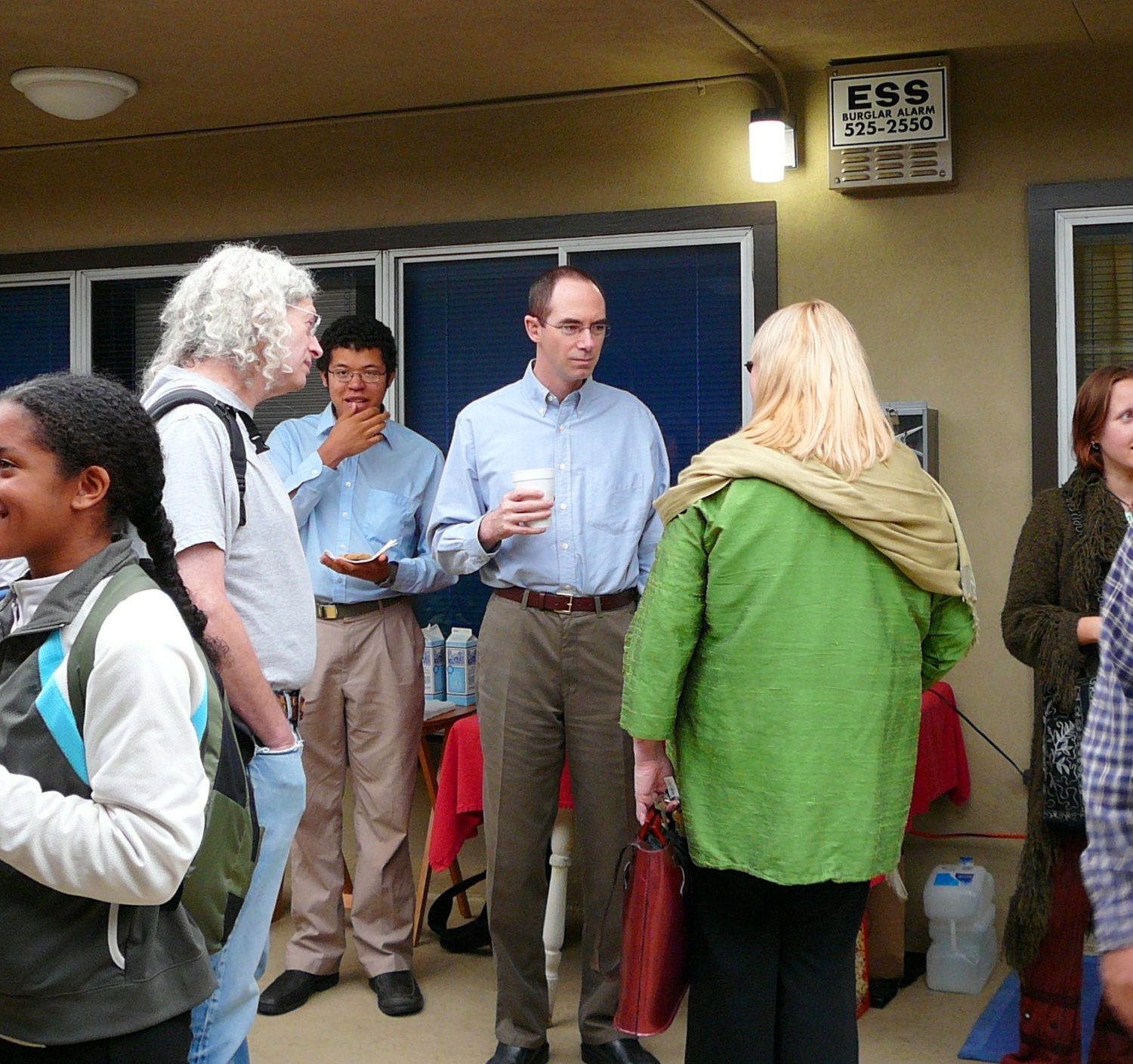
Mark (Belzebuub) was elected by the members of The Gnostic Movement to coordinate the organization and be its spiritual teacher. Belzebuub volunteered full time in the organization, writing its free courses, providing guidance and direction on doctrine and teaching, and overseeing a range of administrative work.
The Gnostic Movement was part of the Gnostic tradition started by Samael Aun Weor; Belzebuub had studied under Weor’s successor and close disciple Rabolu. In the modern Gnostic tradition a spiritual teacher was often designated with the prefix “master” (the word from which the honorific “Mr” derives). In Gnosticism it indicates that a person has merged with an aspect of their inner Being which is called “master” in many sources, such as Theosophy. It was used in conjunction with a person’s inner name, which was said to be the eternal name of their consciousness; in Gnosticism, it was held that every person had an inner name which they could uncover through a spiritual work. Thus Víctor Manuel Gómez Rodríguez began teaching with the name Samael Aun Weor when he began his mission; he was often referred to as Master Samael Aun Weor in Gnostic circles. Weor himself referred to his disciple Joaquin Enrique Amortegui Valbuena with the name Rabolu and described him as being a master when he had reached the required stage.
When Mark Pritchard began teaching as Belzebuub, there were former students of Rabolu in The Gnostic Movement who carried on the custom of using the prefix master for Belzebuub as they had done for Rabolu, and others followed their example. The term was used to designate qualification: it signified Mark had obtained the level of mastery in his own inner work and had incarnated the part of his inner Being known as “master,” not that he was a master over other people. In that sense, it was not so different from how “master” is used to denote personal qualification in other fields, such as a master of engineering or a zen master, etc.
This was not an official title (Mark had no official title) and Belzebuub never asked or required people to refer to him this way. Most of the time, people just called him “Mark.” But when some people referred to him as Master Belzebuub he did not object because it was a Gnostic custom. However, he later requested people stop using the prefix master, because it had taken on too many negative connotations in wider society.
Modest Nature

Belzebuub has been described as being very down-to-earth, modest, and humble in his conduct by those who knew and worked with him. There was never any special treatment or protocols required around him in The Gnostic Movement—he was low-key and inconspicuous in his appearance and manner, dressed simply and presentably in regular clothes, and spoke and interacted with people in a natural, friendly, and unassuming way. He would sit with everyone else in the community dining hall for meals at retreats and stay back and chat with attendees during social gatherings after class in center cafes. He was friendly and approachable and would talk freely with anyone. When working with members of The Gnostic Movement, he would listen to different points of view respectfully, and would never raise his voice or cut off anyone who was speaking. He always dealt with others courteously, whoever they were, and was known for his warmth and easy-going sense of humor.
In his work and conduct, Belzebuub never solicited personal devotion or flattery. However, a few online detractors sought to present Belzebuub as some sort of megalomaniac who acted or was treated as some kind of God-like figure. However, in both his conduct and teachings Belzebuub did nothing of the sort. He has never said he or any particular person is “God,” but emphasized everyone had a spark of divinity within and the potential to reach spiritual enlightenment. Gnostic cosmology clearly outlines how the consciousness in each person is a spark of a greater divine being, and each human being has an innate potential to self-realize by awakening their consciousness and merging with the divinity of their inner Being. Belzebuub’s work was focused on making it as clear as possible for people to undertake the same process of awakening he was undertaking. His courses were clearly directed to this aim—they outlined how people could receive their own inner spiritual guidance and develop their own spiritual potential, and he openly encouraged people to experience spirituality for themselves, not worship him or anyone else. He never sought personal devotion, nor was he showy, pretentious, or affected by his role as a spiritual teacher in any way. He was renowned for his nondescript behavior, appearance, and approach to teaching, and people often remarked on how down-to-earth he was; he simply focused on providing practical information people could use for their own personal spiritual development.
Personal Life

As explained in the section above on relationships, Belzebuub’s teachings on relationships and sexuality were very clear. He extolled the need for a loving, committed, and faithful relationship to progress spiritually, explained how adultery was a major violation of spiritual principles and anathema to the spiritual path, and made clear that lustful behavior and desires had to be overcome for progress to be made. The Gnostic Movement upheld the sanctity of marriage as one of its highest standards. A faithful, loving, and monogamous relationship with one’s partner was viewed as central to the process of spiritual development.
Perhaps for this reason, the most malicious of the false allegations directed at Mark were of the sexual kind. These were obviously employed in a calculated attempt to discredit his character and his work, by implying he does not practice what he teaches. However, nothing could be further from the truth. Those who spread such false claims did so incredibly deceitfully and callously.
For example, Mark was accused of “sexual inappropriateness” for entering a relationship with his wife, to whom he is happily married. There was nothing inappropriate about their relationship whatsoever. His wife was thirty years old at the time they commenced their relationship, but anonymous detractors attempted to infantilize and demean her, portraying her as some kind of immature hapless girl who was supposedly being exploited to “serve” Mark. In reality, two adults who have made clear they love each other very much entered a relationship on equal terms. Mark and his wife have been happily married for years now, and co-write books and run a website together. The attempts to cast their loving relationship as something “inappropriate” were just nasty, spiteful, underhanded gossip.
Anonymous detractors tried to smear Belzebuub further by suggesting this relationship commenced while he was still in a relationship with his ex-wife from his first and previous marriage, but that was another deception. Mark had separated from his first wife before he and his current wife had even conceived of being together. In Gnosis there has to be one year of celibacy between partners. However, Mark has stated he had to wait much longer than a year due to reaching a stage of the spiritual path where the period of celibacy lasts many years. While Mark was in this period of celibacy, he and his current wife met and expressed their wish to be together but mutually agreed to wait however long was necessary before they could be together as a couple.
Altruistic Lifestyle
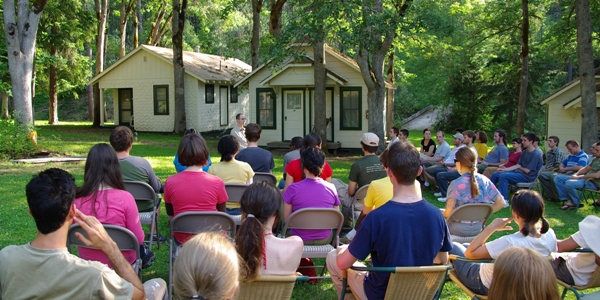
Mark has dedicated most of his life to teaching spirituality for free. When he began as a student and teacher in Rabolu’s organization, he worked very hard and selflessly, frequently moving from place to place to teach, opening eight study centers in seven cities across four countries, and teaching classes in a further five.
When Mark Pritchard began teaching as Belzebuub in Australia, he wrote a series of free courses which for the first time enabled people to study Gnosis online. They were provided completely free of charge in The Gnostic Movement, and were taken by more than ninety thousand people. His written course material was later compiled into books,1 and on principle he has refused to derive any royalties from their sale. In fact, he put a stipulation in his contract with his current (and previous) publisher specifying that he would receive no royalties from the publisher from the sale of his books. His current contract contains the following clause:
AUTHOR ROYALTIES
2. The Author does not wish to receive any compensation for the use of his Works, and provides them to Publisher free of charge for Publisher to fulfill its mission of advancing universal spiritual knowledge as freely and broadly as possible throughout the world. The Author shall not receive any royalties from Publisher.
Despite giving all his courses and talks for free, and never receiving any profit from his books, anonymous online detractors have absurdly tried to paint Mark as some sort of self-seeking swindler out to make money. These allegations are so absurd they can be dismissed by their sheer illogic: how does a man make money from renouncing any profit whatsoever from his life’s work?
In reality, by dedicating his life toward sharing spiritual teachings with others for free, Mark has often lived in difficult circumstances and made many personal sacrifices. He financed most of the Gnostic centers he opened in the UK himself and often lacked a place of his own, sleeping the night on some meditation cushions in the center which he would pack away in the morning. When he moved to Australia and began teaching as Belzebuub, he lived off what personal donations he received, which were often little, as well as his own inheritance, much of which he put back into funding The Gnostic Movement anyway. He lives very modestly, and in many instances had to get by in very rough conditions because he lacked money either due to circumstances or because he gave it away.
Mark could have made money from his work if he wanted to, but selling spiritual teachings runs completely against his principles. He has always wanted to uphold the time-honored tradition of sharing spiritual teachings freely, and has dedicated his life to doing so.
Belzebuub’s Assistance to the Australian Retreat Project

Mark made many sacrifices and contributions to support The Gnostic Movement in advancing its objectives over the years—the Australian retreat project was one initiative he assisted greatly. Yet some anonymous trolls have tried to claim the opposite, spreading a ridiculous claim that Mark “took” The Gnostic Movement’s retreat property in Australia and its retreat funds. Nothing could be further from the truth. What actually happened is that the members in Australia bought a property to use as a retreat which turned out to be unsuitable and had to be sold. Using his recently acquired (at the time) inheritance, Mark agreed to purchase the property from the Movement at its accredited market rate which was $100,000 more than the organization paid for it. The sale nearly doubled the organization’s retreat funds, and enabled the organization to search for a more suitable property with a larger budget.
The way it happened is that the members in Australia bought a basic cabin on a rural acreage with the aim of developing the property to be used as a retreat, using donations raised for this purpose. It was bought while Mark was overseas. After the purchase it was disused and falling into disrepair.
Seeing the Movement’s investment going to waste and the property deteriorating, Mark offered to move in as a caretaker to maintain it and organize to fix it up. The living conditions were quite poor. It was a one bedroom cabin with a basic kitchenette, and was off the grid with no mains water or electricity. The infrastructure was substandard and in bad condition; it had a contaminated water tank in need of repair and solar panels that could barely run small household appliances, during daylight only. The cabin was unsealed, and the dense surrounding vegetation was teeming with spiders, bugs, and dangerous snakes—including one of the world’s most venomous snakes, which was seen in and around the cabin itself. Snakes and scorpions would sometimes enter the cabin, and Mark had to work by candlelight at night to prevent swarms of flying insects pouring in through the cracks.
Despite these conditions, Mark moved in to look after and restore the Movement’s investment as a caretaker, because at that time, no one else was willing to. While staying there, some people in the organization came up on some weekends to help with repairs and renovation work. Mark lived there for less than a year as a caretaker, then moved overseas to the UK, at which point another couple from the organization moved in as caretakers.
However, the members discovered that the local council would not approve the property to be used as a retreat under municipal regulations. Because the property could not serve as a retreat, they decided to sell it so the profit from the sale could be put toward buying a more suitable property. They decided the property could be suitable for Mark to buy and offered to sell it to him. Mark expressed interest, but said he would only buy it at its accredited market value, and only if no other members wished to buy it.
The members hired an accredited valuer to assess the property’s market value; it was appraised as being worth $100,000 more than the organization paid for it (almost double the original price). After it was offered for sale to all members and none made offers to buy it, the property was offered for sale to Mark Pritchard at the accredited value; he purchased it with his inheritance which he had recently received. After the sale, Mark encouraged the members at the time to start looking for a new retreat property, but they were not able to begin a comprehensive and thorough search until a few years later.
Because the property he purchased was still in a very basic unfinished state (it lacked a kitchen and the toilet and bathroom were missing a wall for example) some of Mark’s friends in the organization who were tradesmen or professional builders offered to continue doing some work on it on weekends. Mark has stated he felt extremely grateful for their help, and told them that he hoped in the future the place could be used (or sold to buy another property to be used) as an informal monastery for advanced members, where he would live and they could come to stay and live for extended periods in a spiritual retreat setting whenever they wanted or needed somewhere to stay. The monastery was to be something additional and separate from the organization’s retreat project.
However, he never got to see the property he owned completed, as he moved overseas to the USA to carry out a mission there while the property was still a construction site. A few years later, while still based in the USA, he ended up selling his property in Australia, and used a large part of the money from the sale to fund the living expenses for his mission to the U.S. (as explained further below in the “Salary for U.S. Mission” section).
The Members in Australia thoroughly investigated many potential retreat properties, but on close examination, all contenders were rejected due to onerous regulatory requirements or budgetary constraints. Despite an extensive ongoing search, when The Gnostic Movement closed, they had not succeeded in finding anything suitable within the budget. The retreat holding company they established, which held the retreat funds, continued operating after The Gnostic Movement closed. It continues to hold the retreat funds in a high interest account, to be used for the establishment of a spiritual retreat in the future when a suitable property can be found and the vision can be accomplished.
Salary for U.S. Mission

Belzebuub moved to the USA in 2007 to promote Gnosis in the country. There was a keen interest in Gnosticism at the time there following the highly-publicized rediscovery of the Gospel of Judas (an ancient Gnostic text long thought lost) and the publication of the first English translation by the National Geographic society in 2006.
To move to the U.S. he needed a visa, and the only visa he was eligible for was a religious worker visa, under which The Gnostic Movement in the USA could sponsor him as a religious employee. This visa required that the sponsoring organization pay him a wage, as the Government had to be satisfied any religious workers entering the country were financially self-sufficient and would not enter the broader job market.
Mark Pritchard had always worked for free in The Gnostic Movement, living off his inheritance and whatever donations people contributed to him personally. However, he agreed to be paid a wage because it was the only way he could undertake the mission. The salary was set just above the federal minimum wage.
Mark refused to be paid out of The Gnostic Movement’s general funds. He had only ever accepted donations made explicitly to him; donations made to the organization were never redirected to him in the past. He wanted to follow the same principle with the salary. Although it is commonplace and perfectly legal for charities and religious organizations to pay staff salaries out of their funds, which is a normal part of how they accomplish their work, Mark did not want his payment coming from the organization’s general funds and donations. So instead he asked people who already regularly made personal donations to him, to redirect their personal donations to him to The Gnostic Movement to be used to fund the income it was required to pay him for the visa. These donations were not enough to cover his remuneration though, so Mark ended up funding much of his own income personally—he donated more than $40,000 USD to The Gnostic Movement out of his inheritance to fund his own salary.
Bizarrely, Mark was pummeled with absurd criticisms and made out to be some kind of greedy and duplicitous figure because he received a very modest salary from the religious organization he worked for—and yet his pay was funded by donations people would have otherwise given to Mark personally, and also directly by Mark himself.
Conclusion
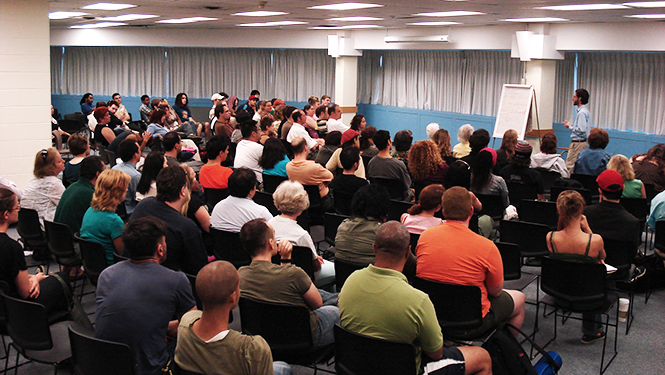
The Gnostic Movement made a wonderful contribution to thousands of people’s lives, providing free spiritual services which showed people how to attain their own inner guidance and metaphysical experiences. It was also a place where people made lasting friendships, enjoyed being in an uplifting atmosphere, and met and discussed spirituality with like-minded people. Belzebuub and the various volunteers did outstanding work to make it all possible, which made The Gnostic Movement the most successful Gnostic organization in the western world of its time.
A few vindictive, misleading rants and absurd alarmist claims littered around the dark corners of the web by a handful of trolls does not change this fact. In reality, the overwhelming majority of the 90,000+ people who participated in The Gnostic Movement not only had a positive experience, but treated those in the organization positively too—while participating in the Movement and after leaving. Just as the personnel of the Movement did, the vast majority of participants showed consideration to other people and respected their differences, appreciating people’s right to pursue the spirituality of their choice without interference, even if those choices or beliefs differed from theirs. It was only a tiny intolerant and vexatious minority who failed to show that fundamental human trait of respect, tolerance, and common courtesy most people possess.
The Gnostic Movement is no longer around. Belzebuub stepped down as the spiritual teacher, choosing to focus on writing independently and withdrawing from public life in 2010. The members closed the organization down after he left.
- Information about Belzebuub’s books can be found on Goodreads. A review of Belzebuub’s book Gazing into the Eternal can be found here.